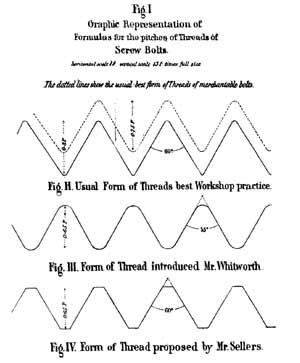|
IEC 62264
IEC 62264 is an international standard An international standard is a technical standard developed by one or more international standards organizations. International standards are available for consideration and use worldwide. The most prominent such organization is the International O ... for enterprise control system integration. This standard is based upon ANSI/ISA-95. Current parts of IEC 62264 IEC 62264 consists of the following parts detailed in separate IEC 62264 standard documents: * Part 1:2013 Object Models and Attributes of Manufacturing Operations (Second edition 2013-05) * Part 2:2013 Object model attributes (Second edition 2013-06) * Part 3:2016 Activity models of manufacturing operations management (Second edition 2016-12) * Part 4:2015 Objects models attributes for manufacturing operations management integration * Part 5:2016 Business to manufacturing transactions * Publicly Available Specification - Pre-standard Part 6:2016 Messaging Service Model [...More Info...] [...Related Items...] OR: [Wikipedia] [Google] [Baidu] |
International Standard
An international standard is a technical standard developed by one or more international standards organizations. International standards are available for consideration and use worldwide. The most prominent such organization is the International Organization for Standardization (ISO). Other prominent international standards organizations including the International Telecommunication Union (ITU) and the International Electrotechnical Commission (IEC). Together, these three organizations have formed the World Standards Cooperation alliance. Purpose International standards can be applied directly or adapted to meet local conditions. When adopted, they lead to the creation of national standards that are either equivalent to or largely align with the international standards in technical content, though they may have: (i) editorial variations, such as differences in appearance, the use of symbols, measurement units, or the choice of a point over a comma as the decimal marker, and (ii) va ... [...More Info...] [...Related Items...] OR: [Wikipedia] [Google] [Baidu] |
Enterprise Control
Enterprise control is the ability to combine control, intelligence and process management to enable business optimization that is inclusive of business and production operations. It combines the strength of both business processes and production operations processes. It is the deliberate act of synchronizing business strategy with operational execution in real-time to enable closed loop business control across an enterprise. Overview A distributed control system gave way to process automation systems which lead the way for the concept of collaborative automation process systems developed by ARC Advisory Group Later, enterprise control systems became key terminology in the marketplace. ANSI/ISA-95 Enterprise-Control System Integration, or ISA-95 (known internationally as IEC 62264) is an international standard for developing an automated interface between enterprise and control systems. This standard has been developed for global manufacturers. There are five levels and It was dev ... [...More Info...] [...Related Items...] OR: [Wikipedia] [Google] [Baidu] |
ISA-95
ANSI/ISA-95, or ISA-95 as it is more commonly referred, is an international standard from the International Society of Automation for developing an automated interface between enterprise and control systems. This standard has been developed for global manufacturers. It was developed to be applied in all industries, and in all sorts of processes, like batch processes, continuous and repetitive processes. Objectives The objectives of ISA-95 are to provide consistent terminology that is a foundation for supplier and manufacturer communications, provide consistent information models, and to provide consistent operations models which is a foundation for clarifying application functionality and how information is to be used. Standard parts There are 5 parts of the ISA-95 standard. Part 1: Models and Terminology ANSI/ISA-95.00.01-2000, Enterprise-Control System Integration Part 1: Models and Terminology consists of standard terminology and object models, which can be used to decid ... [...More Info...] [...Related Items...] OR: [Wikipedia] [Google] [Baidu] |
IEC Standards
The International Electrotechnical Commission (IEC; ) is an international standards organization that prepares and publishes international standards for all electrical, electronic and related technologies. IEC standards cover a vast range of technologies within electrotechnology. The numbers of older IEC standards were converted in 1997 by adding 60000; for example IEC 27 became IEC 60027. IEC standards often have multiple sub-part documents; only the main title for the standard is listed here. * IEC 60027 Letter symbols to be used in electrical technology * IEC 60028 International standard of resistance for copper * IEC 60034 Rotating electrical machines * IEC 60038 IEC Standard Voltages * IEC 60041 Field acceptance tests to determine the hydraulic performance of hydraulic turbines, storage pumps and pump-turbines * IEC 60044 Instrument transformers * IEC 60045 Steam turbines * IEC 60050 International Electrotechnical Vocabulary * IEC 60051 Direct acting indicating analo ... [...More Info...] [...Related Items...] OR: [Wikipedia] [Google] [Baidu] |
Control Engineering
Control engineering, also known as control systems engineering and, in some European countries, automation engineering, is an engineering discipline that deals with control systems, applying control theory to design equipment and systems with desired behaviors in control environments. The discipline of controls overlaps and is usually taught along with electrical engineering, chemical engineering and mechanical engineering at many institutions around the world. The practice uses sensors and detectors to measure the output performance of the process being controlled; these measurements are used to provide corrective feedback helping to achieve the desired performance. Systems designed to perform without requiring human input are called automatic control systems (such as cruise control for regulating the speed of a car). Multi-disciplinary in nature, control systems engineering activities focus on implementation of control systems mainly derived by mathematical modeling of a diver ... [...More Info...] [...Related Items...] OR: [Wikipedia] [Google] [Baidu] |

